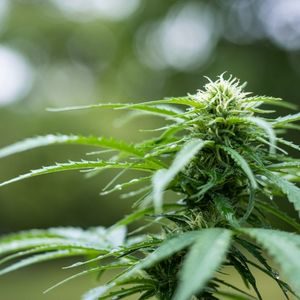As marijuana is becoming legalized in more states for medicinal purposes as well as recreational use, many people are wanting to know the difference between Indica and Sativa types of cannabis. Most cannabis connoisseurs are familiar with the effects from both types of cannabis strains and then of course we have the hybrids, with the best of both worlds.
The consensus is that indica provides a more overall “body buzz” that helps people relax and sleep whereas sativa gives more of a “head buzz” that can be energizing and productive. This is where indica gets the name “œin da couchâ”, as it can be known for having a “couch-lock” effect and is a good way to remember the main difference as far as effects go.
Many factors come into play, however, in creating the medicinal or recreational effects of each cannabis strain. The amount of cannabinoids and terpenes play a crucial role in the effect of each cannabis strain. Cannabis indica and Cannabis sativa share many similar features but also have distinct and specific differences as two species of cannabis.
Indica vs Sativa: Physical Plant StructureÂ
Most experienced growers can tell the difference between indica and sativa just by looking at the plant as they each have different growth characteristics.
Sativa plant – the lanky sativa plant tends to grow taller and thinner than an indica plant, with lighter colored green leaves.
Indica plant – the indica plant tends to grow shorter and bushier, with broad, darker green leaves and can be known to have more of a purplish color.
These are some telltale signs to identifying the type of plant in growth stage, although with many hybrids out there it may not be so cut and dry.
Physical Effects of Indica vs Sativa
As stated earlier, for the most part indica is thought to produce a body buzz, couch lock feeling whereas sativa is more stimulating. This is not always the case, however, and not every indica or sativa produces the same effects. In fact, most strains these days are somewhat of a hybrid that are either indica dominant, or sativa dominant.
One myth that some people may believe is that indica always has a higher THC content than sativa, this is not the case. Here are some of the main differences between indica and sativa:
Indica Dominant Effects
- Heavy body high – cannabis indica is known for producing a heavy body-high, a relaxing feeling often used at night to combat insomnia.

- Stimulate appetite – this strain is also good to stimulate an appetite as cannabis lovers like to call “the munchies”.
- Pain management – indica can also be good to help reduce pain and nausea.
Sativa Dominant Effects
- Head buzz – cannabis sativa is thought to be more stimulating and energy boosting which makes it a nice choice for daytime or that first wake-n-bake.
- Eases depression – for some people, the uplifting feeling can help to ease depression and anxiety, although any strain can increase anxiety in some people and everyone should get to know what their own tolerance levels are.
- Increase focus – sativa can spur creativity for some who may like to tackle artistic projects with a nice sativa high. This strain can even make mundane tasks a little more appealing if you like to toke up before you do yardwork or household chores.
Now that you know the general differences between indica and sativa, you can experiment with your favorite strain and strength as there is a wide range of cannabis flower with varying levels of each. Check out a hybrid as well as this can be a nice way to experience the body buzz of indica with higher CBD content to smooth out the couch lock. Do not be fooled though, some sativa blends can still leave you “œin da couchâ” and some indicas can get you fired up, it all depends on the strain, the cannabinoids, and terpenes.
Mosca Seeds is internationally recognized as a leading cannabis seed breeder with several cannabis cup awards. We keep your favorite strains alive and continually develop new drops to satisfy the evolving tastes of cannabis lovers worldwide. Get your favorite cannabis seeds now available in sativa and indica, or hybrid blends.
